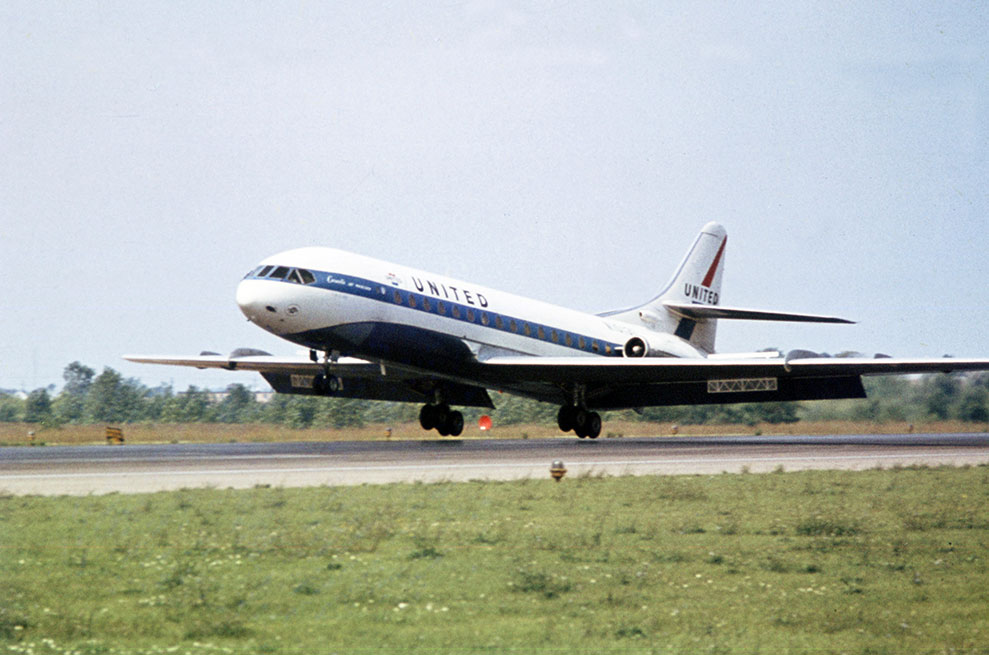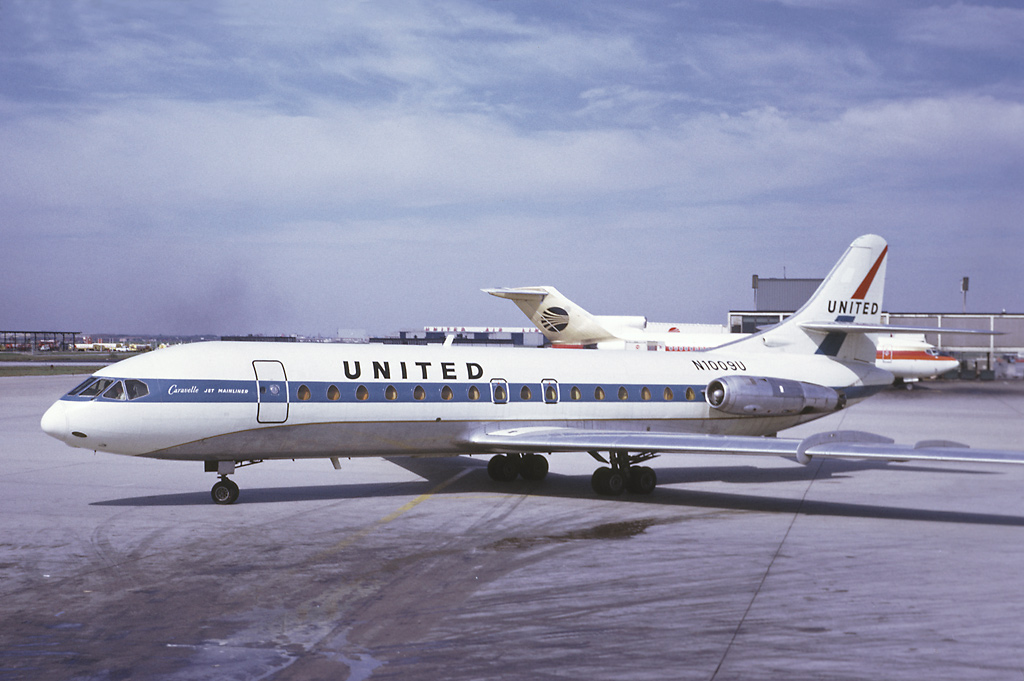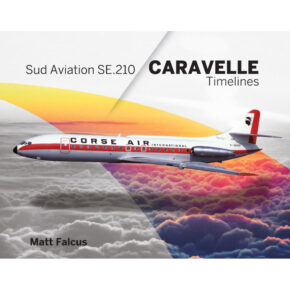Summary
When France’s Sud Aviation developed its new Caravelle airliner in the 1950s, it hoped to take the aviation industry by storm.
The introduction of jet airliners had been gathering pace, with the de Havilland Comet paving the way in the 1940s, and the Boeing 707 and Douglas DC-8 following in the early 1950s.
All, however, were targeting long-haul travel.
That’s where Sud Aviation hoped to capitalise, for its Caravelle was aimed at short- and medium-haul travel – the domain so far of ageing piston and early turboprop airliners.
It hoped to attract airlines to the marvels of jet travel, with its speed, modernity and comfort which would attract passengers and improve travel for all.
One of the key targets in doing this was to attract major US airlines which were among the biggest and most important in the world.
Modifying the Caravelle for United
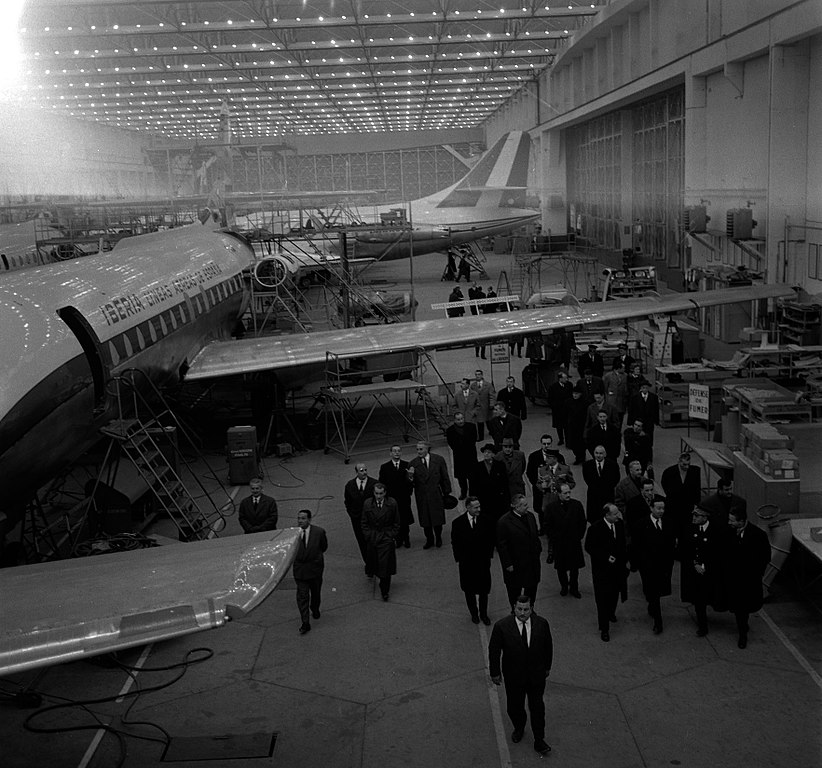
André Cros, CC BY-SA 4.0 <https://creativecommons.org/licenses/by-sa/4.0>, via Wikimedia Commons
The early Caravelle models were successively updated as Sud Aviation continued to work with airlines.
The desire to land a noteworthy order from an American carrier saw Sud-Aviation (as SNCASE had now been renamed) work on various modifications to satisfy the requirements of United Airlines. There were also requirements of the Federal Aviation Administration (FAA) to meet if the aircraft was to be certified and sold there. The result was the VI, or 6, models.
With new Avon Mk 531 engines, the first was the VI-N – the letter denoting noise-suppression. The second was the VI-R, designed for United Airlines, and featuring the Mk 533R engine. The 533 included thrust-reversers, meaning the parachute was no longer a requirement.
As a result, United placed an order for 20 aircraft, plus 20 options. This was a significant deal for Sud Aviation and France, and represented the first time and American airline had purchased jets from a European manufacturer.
The order was worth $68 million at the time.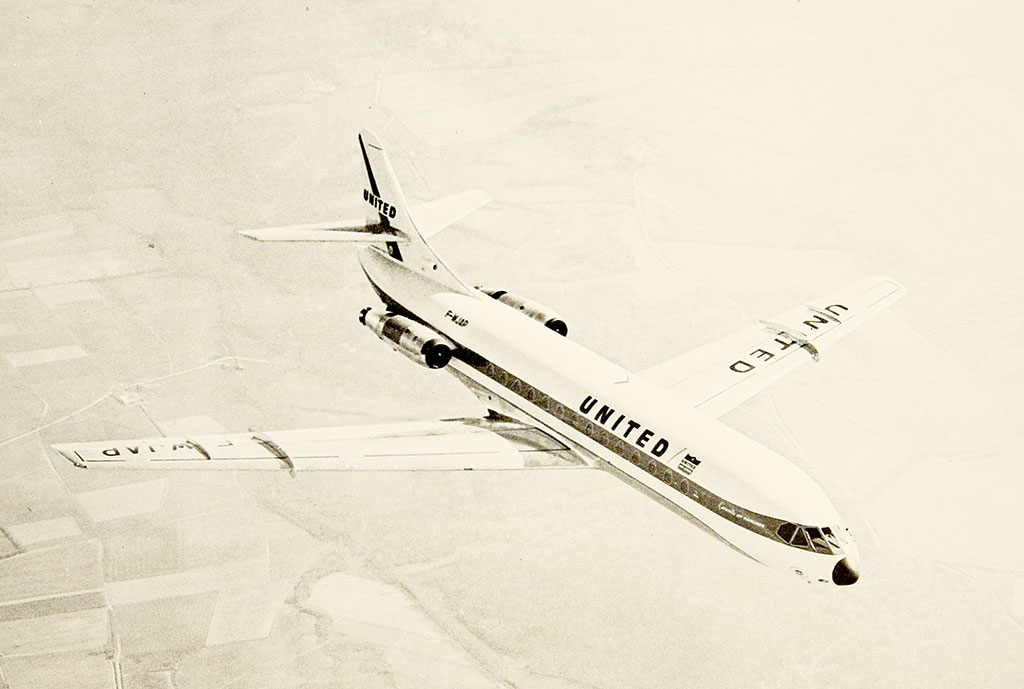
In Europe, the VI-N was delivered to new customer Sabena in February 1961, with the first United VI-R jet following in May.
United’s Caravelle Operations
The first of United’s Caravelles entered service on French national day, 14 July, 1961 serving the key New York Idlewild (later JFK) to Chicago route. This gave United a competitive edge by introducing jets on the route versus the propliners of their rivals.
United also flew the Caravelle on many other key domestic routes including out of Atlanta, Cleveland, Des Moines, Detroit, Hartford/Springfield, Jacksonville, Miami, Milwaukee, Minneapolis St Paul, Newark, Omaha, Pittsburgh, Tampa and Toledo.
The highest frequency service was 18 daily flights between Chicago O’Hare and Newark.
In addition to mostly serving destinations in the eastern United States, United sent its Caravelles to San Franicsco for maintenance, and trained its crews at Denver Stapleton Airport.
United’s Caravelles were configured with 64 seats in a 2 + 2 layout which was aimed at business travellers; the routes chosen were popular business routes, and the airline initially felt the new jetliners would be attractive to these high yielding passengers.
United Retires its Caravelles
Despite having the intention of operating a large fleet of Caravelles when United first ordered the type, it quickly found the type didn’t live up to its full intentions.
Unfortunately, the arrival of the Boeing 727 and 737 in the mid- and late-1960s meant the smaller Caravelle lost its appeal and follow-up orders were not placed, despite United holding options on more aircraft. These options were not taken up, and instead the airline looked to offload the aircraft.
United retired its entire fleet by March 1972. Many of the aircraft were sold on to other operators, like Transavia and Sterling Airways.
United Airlines Caravelle Fleet
The fleet of Sud Aviation Caravelles operated by United Airlines, with fate:
N1001U (cn 086) Caravelle VI-R – 1961-1971 – Preserved Pima Air & Space Museum, Tucson, AZ
N1002U (cn 087) Caravelle VI-R – 1961-1970 – Sold to Transavia; scrapped 2009.
N1003U (cn 088) Caravelle VI-R – 1961-1971 – Sold to Sterling Airways; nose survives, Somers, CT
N1004U (cn 089) Caravelle VI-R – 1961-1971 – Sold to Sterling Airways; scrapped
N1005U (cn 090) Caravelle VI-R – 1961-1972 – Sold to Sterling Airways; scrapped
N1006U (cn 091) Caravelle VI-R – 1961-1972 – Sold to Sterling Airways; scrapped
N1007U (cn 092) Caravelle VI-R – 1961-1970 – Sold to Transavia; scrapped
N1008U (cn 093) Caravelle VI-R – 1961-1972 – Sold to Sterling Airways; scrapped
N1009U (cn 094) Caravelle VI-R – 1961-1972 – Sold to Sterling Airways; scrapped
N1010U (cn 095) Caravelle VI-R – 1961-1972 – Sold to Sterling Airways; damaged beyond repair 1980
N1011U (cn 096) Caravelle VI-R – 1961-1971 – Sold to Transavia; scrapped
N1012U (cn 097) Caravelle VI-R – 1961-1971 – Sold to Belgian International Air Services; scrapped
N1013U (cn 098) Caravelle VI-R – 1961-1972 – Sold to Sterling Airways; damaged beyond repair 1973
N1014U (cn 099) Caravelle VI-R – 1961-1971 – Sold to Sterling Airways; scrapped
N1015U (cn 100) Caravelle VI-R – 1961-1970 – Sold to Transavia; scrapped
N1016U (cn 101) Caravelle VI-R – 1961-1972 – Sold to Sterling Airways; scrapped
N1017U (cn 102) Caravelle VI-R – 1961-1970 – Sold to Transavia; scrapped
N1018U (cn 103) Caravelle VI-R – 1962-1972 – Sold to Sterling Airways; scrapped
N1019U (cn 104) Caravelle VI-R – 1962-1972 – Sold to Sterling Airways; scrapped
N1020U (cn 114) Caravelle VI-R – 1962-1972 – Sold to Sterling Airways; scrapped
Surviving United Caravelles
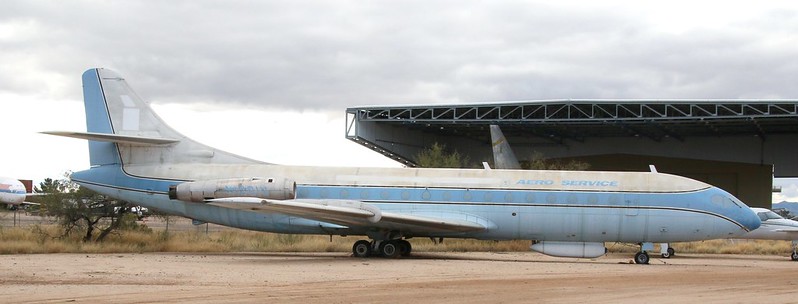
N1001U at Pima Air & Space Museum. Photo (c) Steve Knight
As can be seen in the fleet list above, one of United’s former Caravelle aircraft survives intact. This is the first example, N1001U, which flew with the airline until 1971 before being sold to Aero Service Corp.
It later flew for LASA in Brazil as PT-DUW, and was then sold to the Western Geophysical Corp once again as N1001U. It was retired to the Pima Air & Space Museum in Tucson, AZ, in 1990. It remains in the outside display area in the basic livery of its final operator, which flew the aircraft on scientific flights.
Additionally, the cockpit of former N1003U exists at a private residence in Somers, CT. This aircraft flew for Sterling Airways, Midwest Air Charter and Airborne Express after United, and was preserved for years at the New England Air Museum in Windsor Locks, CT. It was scrapped in 2011, with the cockpit saved.
 Sud Aviation Caravelle Timelines
Sud Aviation Caravelle Timelines
Discover more of the history and operational life of the Sud Aviation Caravelle in our new book. Packed full of colour photographs of Caravelles in action around the world with many different airlines, it’s a great trip down memory land and includes many rare pictures.
Learn about the history and development of the Caravelle and its different variants, and see some of the Caravelles in preservation.
Order Here


